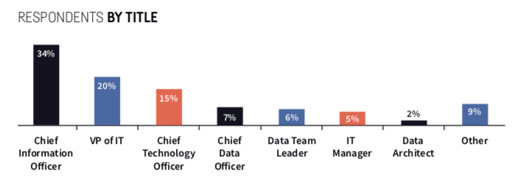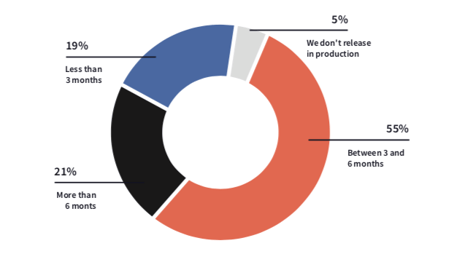In late 2019, Dataiku enlisted Gerson Lehrman Group (GLG) to administer an anonymous survey to 200 IT professionals across a range of industries. The goal of this survey was to uncover trends in data architecture in the enterprise, specifically in the context of operationalizing machine learning models. What did we find?

To get the detailed breakdowns of 14 of the top survey questions in addition to insights on machine learning trend adoption and maturity, download the full survey results and report.
Cloud Maturity and Overall AI Maturity
Using answers to key survey questions (including whether the company is using GPU for deep learning, where data is stored, on what public cloud - if any - and what the business is using to train machine learning models), we calculated a cloud maturity score for each respondent.
Where is the data that your company uses for machine learning projects?

We also calculated a cloud maturity score for each respondent using answers to a few additional survey questions (including whether the company is using GPU for deep learning, where data is stored, on what public cloud - if any - and what the business is using to train machine learning models).
Ultimately, as cloud maturity is shifting from medium to high, overall AI maturity follows a similar pattern. This indicates that cloud maturity is likely indicative of more widespread, organizational maturity when it comes to creating, operationalizing, and maintaining machine learning models in production at a large scale.
To see the graphs detailing distribution of calculated cloud maturity and overall AI maturity, download the ebook.
Releasing a first model in production: How long does it take?

Overall Trends in Data Science, Machine Learning, and AI
The survey contained a section on trends, and respondents could choose one of five responses per trend:
- Not familiar with this trend
- Not important
- We already use this
- We plan to implement within the next year
- It’s a long-term goal, but no immediate implementation plans
Overall, the top trends that large companies plan to implement this year are optimization (the difference between choosing a solution that gets the business to its goal but maybe doesn’t do the best possible job of doing so - for example, a 2x instead of a 3x increase in profit - and a solution that gets the business to its goal in the most ideal way), AutoML, and active learning.




